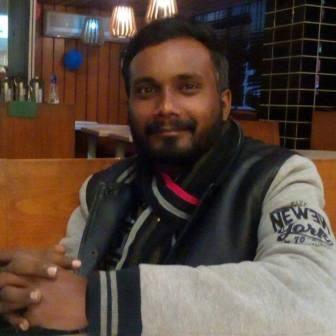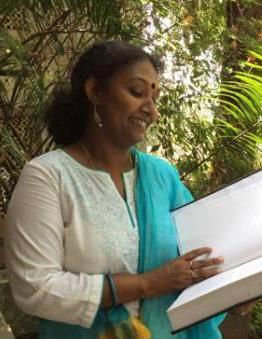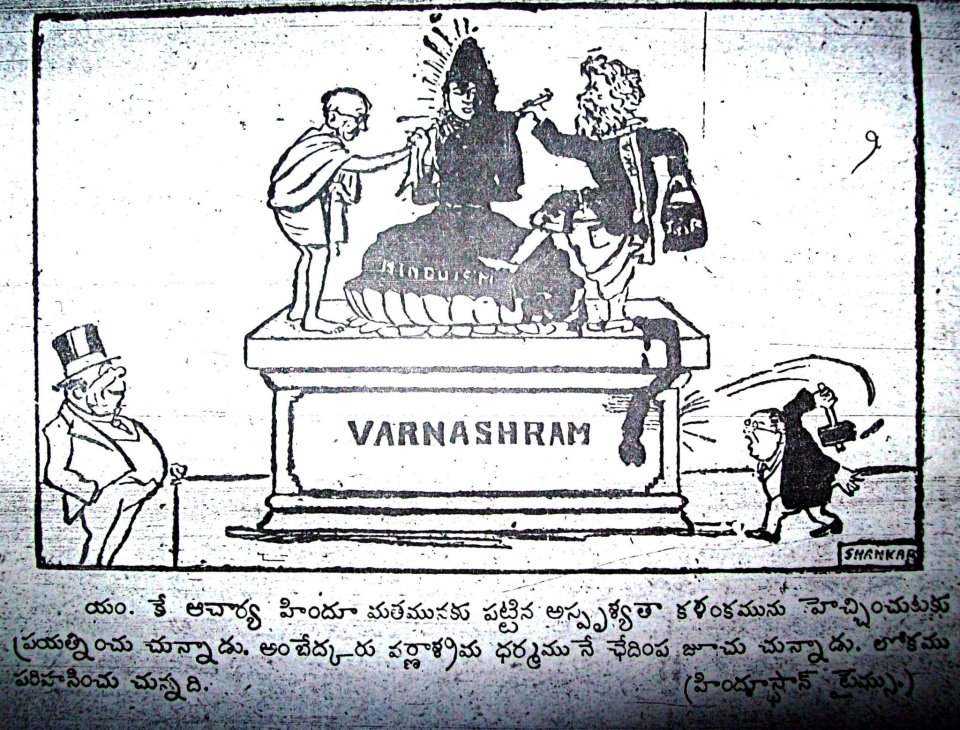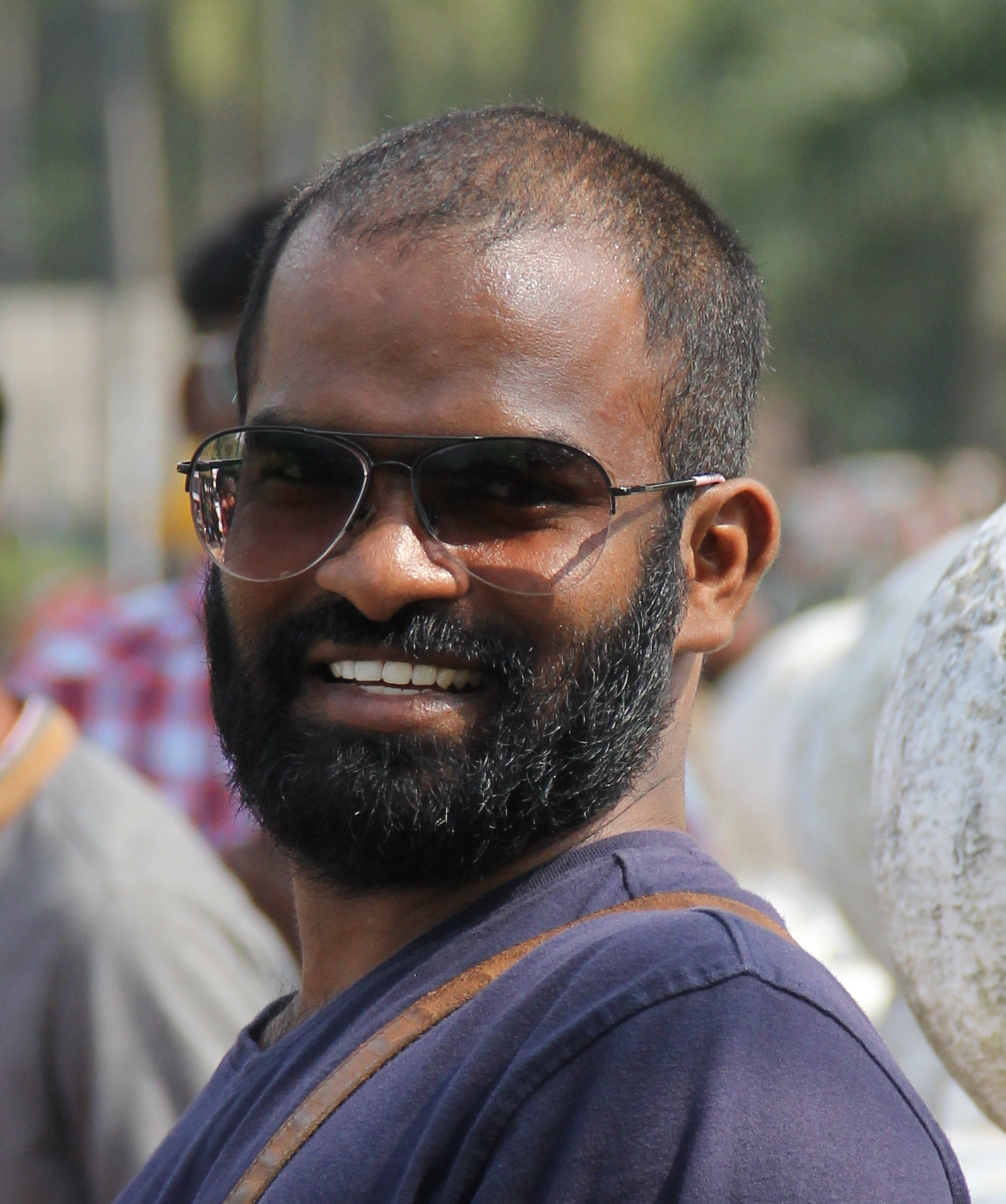Rahul Sonpimple
Abstract
 This article aims to understand the recent ‘celebration of Ambedkar’ by the ruling party and other political parties. The article argues that the celebration of Ambedkar by the BJP and RSS is more than an unsuccessful attempt at appropriation, rather it is a socio-political compulsion brought upon by the Dalit-Bahujan struggle that has forced the BJP to recognize the significance of Ambedkar. The contemporary Dalit-Bahujan mobilization, which manifests itself through a politicized Buddhist identity and the creation of an alternative celebratory space, is emerging as a challenge to the right wing forces.
This article aims to understand the recent ‘celebration of Ambedkar’ by the ruling party and other political parties. The article argues that the celebration of Ambedkar by the BJP and RSS is more than an unsuccessful attempt at appropriation, rather it is a socio-political compulsion brought upon by the Dalit-Bahujan struggle that has forced the BJP to recognize the significance of Ambedkar. The contemporary Dalit-Bahujan mobilization, which manifests itself through a politicized Buddhist identity and the creation of an alternative celebratory space, is emerging as a challenge to the right wing forces.
Keywords: Ambedkar, alternate culture, BJP, Dalit-Bahujan, celebratory space
The recent attempt by the BJP to own Ambedkar and the constitution has stirred a debate among various political parties, civil society organizations, thinkers and also within the Dalit community. The issue has gained considerable attention on national and social media platforms. Interestingly, the Modi government’s political move to praise Ambedkar and the constitution, at a juncture when the socio-political environment of the country is dismal, is being understood in terms of appropriation of Ambedkar. However, this article argues that the BJP’s attempt at recognizing Ambedkar is more of a socio-political compulsion to acknowledge the relevance of Ambedkar, created due to the Dalit-Bahujan struggle, rather than a mere attempt at appropriating Ambedkar.
Making of the Celebratory Space
The celebration of Ambedkar post-independence can be read in terms of the growing socio-political awareness and the resultant mobilization among the backward castes in general and Dalits in particular. The celebratory space is an opportunity for the Dalit-Bahujans to assert their self-realized identity over the externally imposed ‘inferior’ identity legitimized by Hindu religious norms. While the celebration of Ambedkar at grassroots level runs counter to the conventional rules of the caste society, it has led to the formation of an alternative cultural discourse for Dalit-Bahujans, which stands counter to the cultural discourse of caste Hindus. In this sense, the celebration of Ambedkar by Dalit-Bahujans not only becomes representative of their collective claim for humanitarian values but also signifies the celebration of Ambedkar’s idea of a just and casteless society. One needs to understand the role played by this celebratory space in the carving of a Dalit-Bahujan imagination which envisages civic life through the notions of equality, liberty and fraternity. Although Ambedkar’s thoughts on the reconstruction of Indian society remain undervalued within the spheres of state and civil society, they have been pivotal in shaping the idea of India for Dalit-Bahujan discourse.
The celebratory space for Ambedkar’s legacy has steadily evolved as a conscious by-product of the continuing Dalit-Bahujan struggle. This celebratory space has greatly antagonised the caste-Hindus against the Dalits, leading to confrontations between the two sections. However, Dalit-Bahujans continue to guard this celebratory space even at the cost of facing violent retributions. The repercussions of being seen as anti-caste, anti-Hindu rebels have taken a heavy toll on Dalit lives. For instance, in 2013 when caste Hindus in Vairagad, Buldhana district of Maharashtra, refused to allow Dalits to put up Ambedkar’s photograph alongside those of other national leaders during the Republic Day ceremony on 26th January. However, on October 12, tensions flared up to an extent where the caste Hindus allegedly attacked the Dalits. They verbally abused Dalit women, hurled stones at the Ambedkar statue and filed false complaints of thefts against Dalit men, which led to the arrest of 15 Dalits under different sections of the Indian Penal Code. Eventually, the caste-Hindus boycotted the Dalits in the village (The Hindu, October 19, 2013). In a similar incidence at Kawalewada village in Gondia district, 50-year-old Sanjay Khobragade was set aflame by five persons of the dominant caste in 2014. A staunch follower of Dr. Ambedkar, Khobragade had been fighting with the village politicians, who belonged to the dominant Powar caste, for getting a patch of land from the Bahyababa temple trust to build a Buddha Vihar. With three temples having been built on the government land, Dalits in the locality had been demanding that the Panchayat Samiti make land available for a Buddha Vihar too (Indian Express, June 9, 2014). In another case, a 21-year-old Dalit youth was brutally killed by upper caste men in Maharashtra’s temple town Shirdi for allegedly having an Ambedkarite song as his mobile ringtone. The song ‘Kara kitihi halla, majboot Bhimacha killa‘ (you can attack as much as you like, but Bhim’s fortress will remain strong) has been composed in the praise of Ambedkar’s work for Dalits. On hearing the ringtone, eight dominant caste youths sitting nearby got agitated and asked the Dalit boy to switch it off, eventually they brutally killed him (NDTV.com, May 22, 2015).
One of the highlights of such brutal attacks is that Dalits often refuse to compromise with their assertive identity, and that further instigates the caste-Hindus. With increasing awareness about educational and constitutional rights, educated Dalits are challenging the intellectual hegemony of caste Hindus. In this context, the Dalit literary movement has played a significant role in challenging the traditional caste hegemony. It has successfully brought Ambedkar’s ideas into the larger intellectual world. Since the early 1960s, a growing number of writers and poets, largely from the scheduled caste communities of Mahars and Buddhists from Maharashtra have been producing literary works dominated by the themes of untouchability and poverty, repression and revolution; above all, their writings are a fierce attack on the Hindu religious and social order (Jayashree B. Gokhale Turner, 1981). Post-conversion, the Dalits are asserting their socio-political identity through the Buddhist identity. Guru (1997), notes that a dynamic and popular Buddhist literature also became the part of public consciousness, which represents revolutionary songs, plays and realistic autobiographies by dalit authors and poets. Books on Ambedkarite-Buddhism are being published, the culture of debates is encouraged, songs are being written, meditation courses are organised. Mass conversion rallies are being held where people reject Hinduism and accept Buddhism. Perhaps we are standing on the threshold of a new age of ‘Buddhist India’ (Omvedt, 2003).
A ‘Ghar-wapsi’ indeed
The counter-hegemonic nature of the Dalit-Bahujan movement in contemporary times can be understood through the act of religious conversion from the stranglehold of Hinduism to Buddhism and the challenge posed by the Dalit-Bahujans to the mythological past of Hinduism. However, many scholars have a differential position on the impact of religious conversion and its significance in the creation of an alternative discourse. Paik (2011) observes that, while some staunch Buddhists assert that they are no longer Hindu and have regard only for Ambedkar and the Buddha, and keep only images of these two figures in their homes along with the blue-covered copies of Ambedkar’s writings, the majority of Buddhist converts have merely added the images of the two to the other deities and saintly figures such as Sai Baba, Ganpati, Khandoba, Durgadevi and Krishna, that they keep in the devhara (household shrine for Hindu gods). According to Gupta (2001), even where Dalits have converted to Buddhism, as in Maharashtra, Hindu beliefs, rites and customs still prevail. However, both Paik (2011) and Gupta (2001) fail to observe the disapproval and criticism faced by such individuals from within the community itself. One needs to take into account the new developments that have occurred after fifty-six years of conversion. These developments can be seen in the emergence of new Dalit literature, distinctive community infrastructure, songs and poetry, ideological growth, political development and the change in religious practices. For instance, earlier the tradition of oral narration was the only way in which elders of the family would narrate stories of Ambedkar to their children, but with the spread of education among Dalits, there has been a development of community literature. This community literature centres on the life stories and messages of Ambedkar and Buddha in the form of books, small booklets, pamphlets, children’s books, and video and audio albums. The most tangible part of the making of this alternative culture is the composition of new songs by the Dalit artists. The distinctiveness of these songs manifests not only in their odes to Buddha and Ambedkar but also in their critique of divisive politics and self-interests of the Dalits leaders. While the songs characteristically rebuke Hinduism they also bare open the internal tensions within the Dalit community.
At this juncture, the Dalit-Bahujan movement is witnessing the creation of an alternative cultural history. The celebration of the beef festival in various universities by Dalit students is a case in point. A beef-eating festival held at a university in Hyderabad led to clashes between right-wing Hindu students and Dalit students. Hindus, who regard cows as sacred fought with the Dalit-Bahujan groups who organised the event (BBC, 16 April 2102). Similarly, the celebration of Mahishasura Jayanti1 at the Jawaharlal Nehru University by the All-India Backward Students’ Forum (AIBSF), despite tooth to nail opposition from right-wing student groups, was an effort to break down ‘Brahminical cultural hegemony’ in the campus (Daily Mail, 14 October 2013).
The recent religious conversion of lower castes from Hinduism to Buddhism during the hate campaign of ‘Ghar-wapsi’ led by the members of ruling party (BJP) was meant to challenge the saffron brigade. At least five lakh people from the other backward classes have decided to convert to Buddhism from Hinduism in Nagpur in 2016. This is indeed a major setback for the RSS and it’s affiliated organisations who had initiated the Ghar-Wapsi drive through reconverting people back to Hinduism. The president of Satyashodhak OBC Parishad, Hemant Upre is quoted to have said that “we were treated as Shudras in spite of being in Hinduism for a long time. So, we felt that it is better to go back to our original religion Buddhism. OBCs are Nagvanshis, and so Buddhism is our real religion. We want to do our Ghar Wapsi by embracing Buddhism” (The Hindu, 3 January 2015). At least five crores of Maharashtra’s 12 crore population is from other backward classes. Stating that religion is for people and people are not for religion, Upre announced that “religion is like a home, where we all should be treated equally and respectfully. However, we were treated badly and in the religious texts too we were given bad names. There is no point staying in this home. Therefore, we had launched our Ghar Wapsi mission in 2011. By 2016, five lakh other backward class people and even people from some other castes will embrace Buddhism. Moreover, many will follow in the future” (ibid). In the same way, driven by the ideas of Ambedkar and unhappy with the ‘inequality’ prevailing in Hinduism, ninety Dalits from different parts of Gujarat converted to Buddhism at the programme organised by the Gujarat Buddhist Academy (October 24, 2015, Indian Express). These counter-hegemonic actions of Dalit-Bahujans are heralding the slow and steady breakdown of the conventional caste-Hindu discourse.
Conclusion
The history of the celebration of Ambedkar and spreading of his ideas into the larger public sphere has been a characteristic feature of the Dalit-Bahujan struggle. Interestingly, unlike other national leaders, Ambedkar’s legacy and his ideas have remained relevant for Dalits in their daily struggle. According to Kancha Ilaiah (2012), for a large number of Dalits, Gautam Buddha is God, and Ambedkar is a prophet who established a spiritual relationship between the Buddha and them. It is important to note that, for a long time Ambedkar’s legacy did not find a significant place in the state and civil society agenda to generate collective consciousness among the masses. It is, however, the people from Dalit-Bahujan communities who have carried forward his legacy tirelessly. The celebratory space has become a resource for creating a counter-hegemonic cultural space for the Dalit-Bahujans. Events such as Ambedkar’s birth anniversary, death anniversary and Dhamma Chakra Parivartan Din, when lakhs of people gather at the Chaitya Bhoomi and Deeksha Bhoomi or at local Buddha Viharas, have been ignored by the state and the media. The continuous efforts by Dalit-Bahujan movement to carry forward Ambedkar’s legacy with limited resources has compelled various political parties, media houses and others to recognise Ambedkar and his legacy. Therefore, merely understanding the current move of the Modi-government to celebrate Ambedkar as an act of appropriation also diminishes the long-standing struggle of Dalit-Bahujans in keeping alive Ambedkar’s legacy. Thus, the enduring celebration of Ambedkar by Dalit-Bahujans has not only forced the mainstream political parties to recognise Ambedkar but also to endorse Ambedkar as a political necessity.
~
Notes
1. Mahishasura is considered as a demon in the Hindu mythologies. The tenth day of Navaratri marks the end of the rainy season and celebrates Durga’s victory over Mahishasura. However, for many anti-caste intellectuals Mahishasura is an icon of the backward classes who was cheated out of a victory.
References
Dabhi, Parimal A (2015): “Ahmedabad DM orders probe into Dalits’ conversion” The Indian Express, 24 October available at
http://indianexpress.com/article/india/indianews-india/ahmedabad-dm-orders-probe.
Dahat, Pavan (2013): “Dalits suffer social boycott in Maharashtra village Buldhana (Maharashtra)”, The Hindu, 19 October, available at
http://www.thehindu.com/news/national/other-states/dalits-suffer-social-boycott-in-maharashtra-village/article5251298.ece
Dalit Man Killed in Maharashtra for Allegedly Keeping Ambedkar Song as Ringtone, 22 May 2015, http://www.ndtv.com/india-news/dalit-man-killed-in-maharashtra-for-allegedly-keeping-ambedkar-song-as-ringtone-765347
Gokhale, Jayashree B & Turner (1981): “Bhakti or Vidroha: Continuity and Change in Dalit Sahitya” in Tradition and Modernity in Bhakti Movements by Jayant Lele, pp 29-39. Brill Archive: Netherland.
Guru, Gopal (1997): Dalit Cultural Movement and Dialectics of Dalit Politics in Maharashtra, Vikas Adhyayan Kendra, Mumbai.
Gupta, Dipankar (2001): Killing caste by conversion, The Hindu, 13 November, available at http://www.thehindu.com/2001/11/13/stories/05132523.htm
Ilaiah, Kancha (2012): The Ethereal Realist, Outlook, May 28, available at http://www.outlookindia.com/article/the-ethereal-realist/280966.
Omvedt, Gail (2003): Buddhism in India Challenging Brahmanism and Caste, Sage Publications, New Delhi.
Paik, Shailaja (2011): Mahar-Dalit-Buddhist: The history and politics of naming in Maharashtra, Contributions to Indian Sociology, online version at http://cis.sagepub.com/content/45/2/217
Shantha, Sukanya (2014): “Dalit activist’s murder, police reject dying declaration, villagers say will fight ’till the end in Gondia”, The Indian Express, 9 June, available at http://indianexpress.com/article/india/india-others/dalit-activists-murder-police-reject-dying-declaration-villagers-say-will-fight-till-the-end/
Violence breaks out at Indian beef-eating festival- BBC News, 16 April 2012, http://www.bbc.com/news/world-asia-india-17727379
~~~
Rahul Sonpimple (rahulsonpimple@gmail.com) is an M.Phil candidate at the Centre for the Study of Social Systems, JNU, New Delhi.










